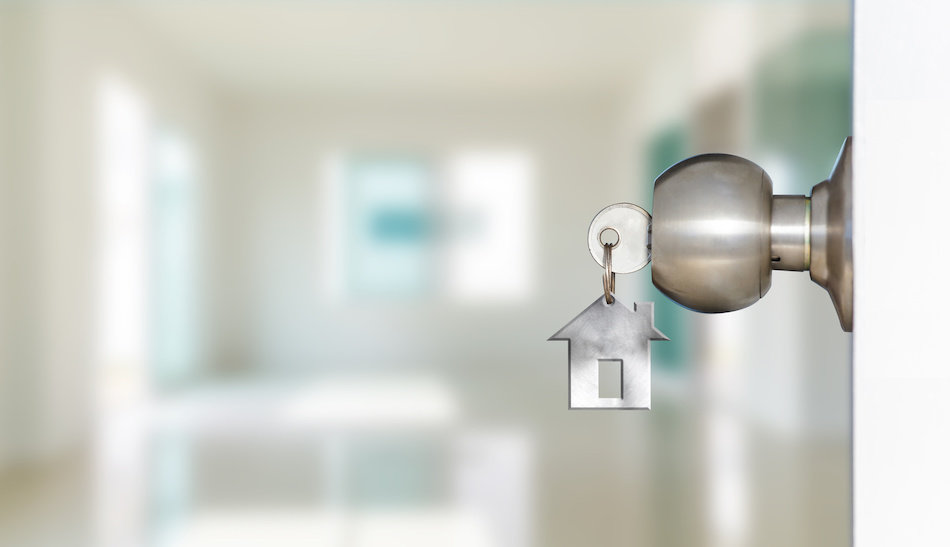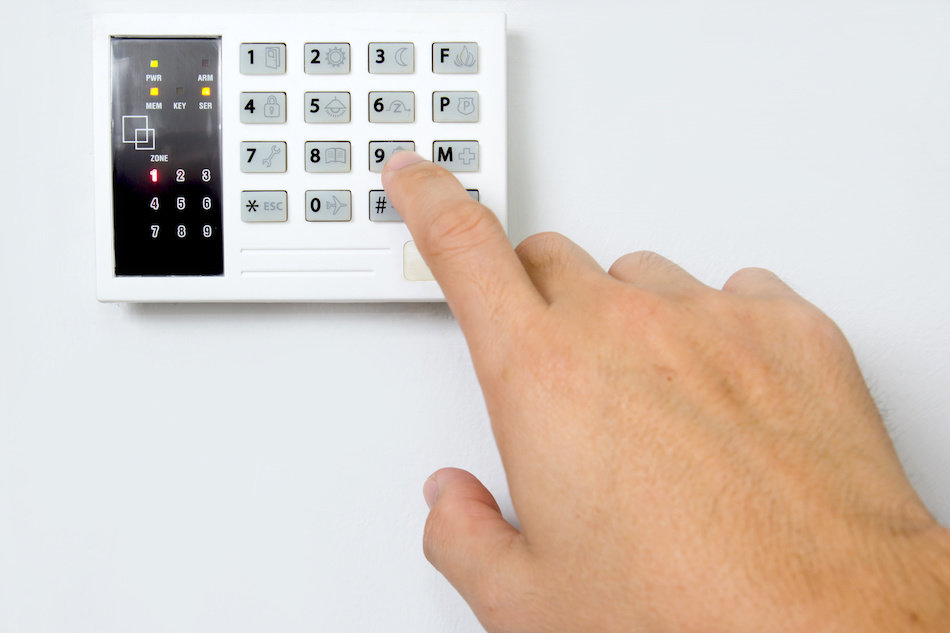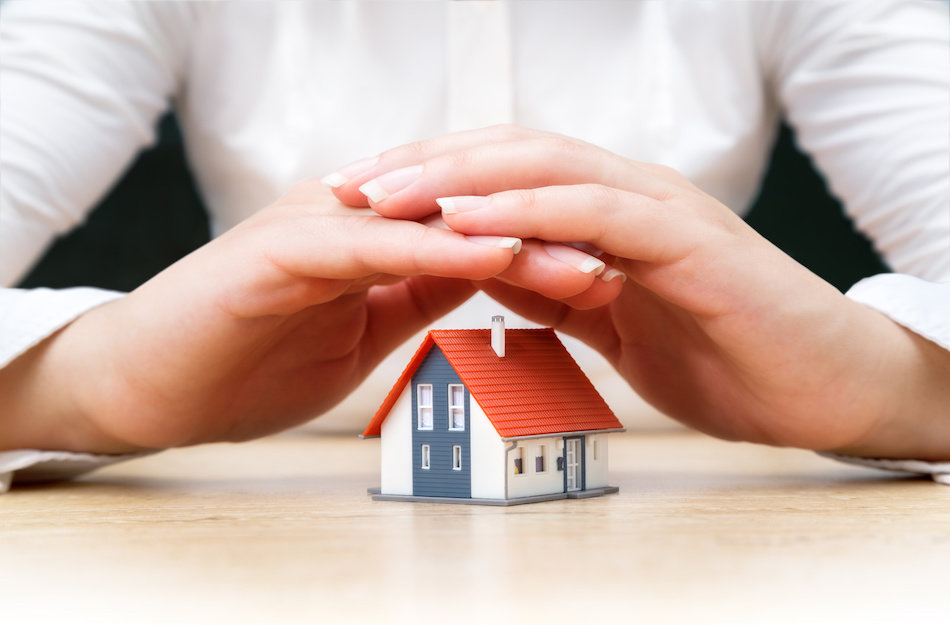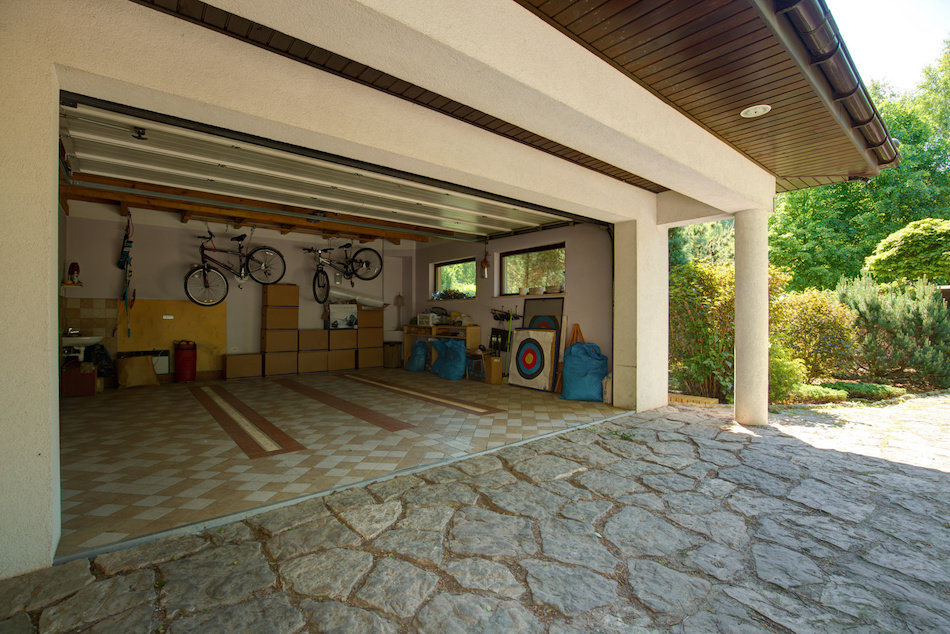Home Security Tips and Considerations: Assessing Everything from the Front Door to the Router
 Many people have a natural inclination to protect their valuables, their homes and their household. Because of this, home security is a rather popular topic of discussion for homeowners everywhere. It can be helpful to know how to make a home seem less attractive to burglars and how to take a more active role in protecting your belongings. There's no shortage of home security advice, products, and services available to homeowners at the push of a button. However, while it is prudent to assess a home's security from time to time, there's no reason to live in fear. Making a home more secure is often much easier than many people think.
Many people have a natural inclination to protect their valuables, their homes and their household. Because of this, home security is a rather popular topic of discussion for homeowners everywhere. It can be helpful to know how to make a home seem less attractive to burglars and how to take a more active role in protecting your belongings. There's no shortage of home security advice, products, and services available to homeowners at the push of a button. However, while it is prudent to assess a home's security from time to time, there's no reason to live in fear. Making a home more secure is often much easier than many people think.
In this guide, we address these issues as well as the habits that can be developed to make a home more secure. We'll also take a look at the growing problem of porch pirates and residential cyber crime. And finally, we'll take a closer look at the various components to consider that may be offered with a home security system.
Table of Contents
- Helpful Habits for Home Security
- How Burglars Choose a House
- Taking an Active Role in Your Home's Security
- Securing the Home and Deterring Burglars
- Garage Security
- Securing Sheds and Outbuildings
- Dealing With Porch Pirates
- Protecting Your Smart Home from Cyber Criminals
- Understanding Home Security Systems
Helpful Habits for Home Security
Establishing a few simple habits can greatly increase a home's overall security. Of course, homes in Colorado Springs military bases have some level of "built-in" security, but these tips can be helpful for anyone. These habits are inexpensive to implement and may use features your home already has.
- Lock doors and windows. Check them every time the house is left empty and make keeping them locked the “default” setting for door and window locks.
- If the house has an alarm, set it. Many homeowners find setting the alarm at each departure an inconvenience. But it is a simple habit to form compared to dealing with the aftermath of a break-in.
- Get to know the neighbors. One of the best forms of home security is having more protective eyes watching a property; especially when the owners are at work or on vacation.
- Keep bushes trimmed. Overgrown vegetation can serve as camouflage for a burglar. Keep hedges trimmed and the house visible. This will boost your curb appeal as an added bonus!
- Keep entrances well lit. Install and use lighting around entrances. Solar, motion activated or timed lighting can provide added security in the absence of an owner.
- Maintain doors and windows. Older and deteriorating doors and windows are easier targets for burglars. Keep them maintained, repaired and replace as necessary.
- Don't advertise your absence. Avoid announcing your absence publicly on social media. Have mail and newspaper delivery stopped when away for several days or more. Keep lawns mowed.
- Leave a radio on in your absence. A talk radio station can be particularly effective in creating the illusion someone is present in the home.
Get in the habit about taking home security more seriously. Consider it each time you leave. With enough practice, safety will become second nature to homeowners.
How Burglars Choose a House

Searching the internet for interviews with former burglars will yield dozens of articles outlining the ways in which people can "burglar-proof" their homes. Many are surprised to learn that a burglar may very well live in or be extremely familiar with the areas they strike. This is why they are frequently confident with the houses in the neighborhood and the habits of the homeowners. Burglars do not want to meet anyone face to face if possible. It is relatively easy for them to target a house when they know the homeowners leave for work at 8:00 am each morning and don't return until 5:30 pm.
Burglars may “scope out” a house in advance by knocking on the door and posing as a salesman to verify your hours. They may look for newspapers or flyers that have accumulated on the porch or driveway or mail that has not been retrieved in days. They may look to see if the landscaping has been neglected for a long period of time. Woodland Park real estate (appropriately) often features homes with a lot of foliage in their lawns, so this would need to be accounted for during any extended vacation or absence. Even trash cans that have not been returned to the house could be an indication the homeowners are away. Burglars can also use trash in another way to determine if a home is worth breaking into, especially if that trash includes an empty box for a wide-screen television, video game system or other expensive items.
Statistics and anecdotes show that burglars will pass on a home with a security system and signage when other options are available. Burglars will also note if a home has a deadbolt in addition to a locking doorknob. And the presence of a dog can also discourage a burglar.
If a yard is fenced-in, that fencing should be locked. When a fence gate is left open, the fencing may then only serve as a way to hide the activities of a burglar.
An open garage door is also an invitation to a burglar, even if the homeowner is in the home or backyard. It can take only seconds to grab expensive homeowner tools, bicycles or yard equipment from a garage when the door is already open.
Burglars know homeowners often “hide” extra keys around their property. If you are hiding a key under a welcome mat, above a light, in a mailbox or in a barbecue grill, it makes it just that much easier to gain entrance.
Possible Points of Entry for Burglars
The most popular way for a burglar to enter a home is the way most homeowners do — via the front door. Far too many times doors are left unlocked or are easy to kick in. Beyond front doors, windows and garage doors are also frequently used as access points. It takes only seconds for a potential thief to walk a property, checking for unlocked doors and windows.
Screened windows and porches are also weak points in the security of a home. Gaining access through a screened in porch or sunroom can provide a shield for burglars to gain access to the main house.
Even garage doors with automatic openers can be bypassed or disabled by a very tech-savvy individual. Garage doors with windows are particularly easy for people looking to enter a garage. Many homeowners fail to lock the door from the garage into their home, believing that the exterior garage door provides enough security. This can be an expensive mistake.
For homes with basements, gaining entry through these small windows is often far too simple. Basement windows are low to the ground and can be hidden from view. Construction-grade basement windows provide little protection.
All homeowners should take steps necessary to make sure all access points to a home are secured with locks, deadbolts or devices that can block a window or sliding door from opening far enough to allow entry.
Taking an Active Role in Your Home's Security

For those who haven't given home security much thought, now may be the time to take a more active role. There are many ways to approach security, and what you choose to focus on will be influenced by a number of factors.
It could be time to upgrade locks or add deadbolts, make sure each window and door functions properly, or replace entranceway locks if any of the keys have been recently stolen or misplaced. Homeowners might want to upgrade outdoor security lighting and purchase timers for indoor lights for when the home is empty. If an entrance door doesn't have peepholes, they are inexpensive and easy to install.
Now may be time to consider some form of the security system. From battery operated alarms installed on doors and windows to monitored sophisticated alarms with video; the choices are wide-ranging. Think about how you woul gain entrance to your home should you forget or lose your keys. These are probably areas that should be focused upon.
Securing the Home and Deterring Burglars
There are plenty of ways to increase security at home. Some options (like complex alarm systems) can be relatively expensive, while others can be accomplished for free. The end goal is usually the same—giving a potential burglar reason to think twice about entering a home.
Owners can start by making their home appear to be occupied in their absence. This can be done in a variety of ways including leaving a television or radio on in the home, using motion activated lighting and placing interior lights on timers.
Valuables should be kept out of sight in the home. Jewelry or electronics that are visible through a window may prove to be too tempting to a burglar. Valuables should be stored in a fireproof safe within a secure area of the home.
Any home that has Wi-Fi should take steps necessary to secure it with a challenging password. Do not use default settings on Wi-Fi. This is critical if you have a home with smart systems, cameras or security tied into the Wi-Fi.
A simple review of entranceway door and window locks can pay dividends. Upgrading window locks and adding deadbolts to doors will provide more security.
When upgrading windows, many will choose the double-pane, shatter-resistant glass that also provides greater security. As a bonus, these windows also provide better insulation from outside noise.
Of course, acquiring a robust, monitored security system from a respected provider is a valuable option. Burglars have learned to look for video cameras that may be placed around the home, so these can also serve as a deterrent. If a full security system is not possible, however, “imitation” security signs and window stickers can be purchased to deter burglars.
Garage Security

Following doors and windows, entering through garage doors are the most popular way to burglarize a home. Bringing this back to a local example: If you're buying a home near Schriever Air Force Base, you may see that many homes have an attached garage. Garages not only frequently store valuable tools and equipment that don't have a place in the home, but they also can allow easy access to inside the home.
Garage doors with large, easy-to-break windows can be particularly troublesome. Windows allow for an initial visual inspection of the contents and give burglars a way to bypass an automatic garage door opener. One aesthetic solution is to cover the windows by spraying them with frosted paint. Glass panes could also be replaced with unbreakable (or harder to break) material.
Homeowners also want to make sure garage door openers are not visible in cars and car doors should always be locked.
Garage doors should be inspected to ensure hinges and bolts are always tight and secure. If a garage door is outfitted with its original lock, consider a lock upgrade or an additional interior manual lock to use when leaving for lengthy periods of time.
Motion activated lighting both on the garage exterior and interior can also be an added deterrent after dark. Make sure the passageway door from the garage to the home's interior is locked and equipped with a deadbolt.
Securing Sheds and Outbuildings
Sheds and outbuildings are often the targets of burglars who are interested in and have a means to profit from valuable tools, lawn equipment and expensive “toys” like motorbikes and bicycles. Sheds and outbuildings frequently are left unlocked, or are even equipped with poor quality locks.
If possible, sheds should be positioned on a property where it can be seen from the main house, but not visible from the street. Unless a shed also serves as a playhouse, a good secure shed should be chosen without windows. Pay attention to the construction of the doors to ensure it is well engineered. A built-in lock is good but the ability to add an after-market lock is even better. Hinges should be heavy-duty and mounted in place with long screws. Door seams should have a lip, so they can't be pried apart.
Small, light-weight sheds need to be anchored not only to prevent them from being lifted to gain access but to keep them in place during high winds.
If your shed has power running to it, a motion activated light is an inexpensive deterrent. If not, a battery operated alarm may scare away any potential thieves.
Another relatively simple security measure is locking larger items together. Even if a burglar gains access to a shed or outbuilding, locking a lawnmower to a grill and the grill to a couple of bicycles will make their theft more challenging.
Dealing With Porch Pirates
The popularity of online shopping has led to the creation of another type of security issue; the porch pirate. A porch pirate is a person who steals packages from a home before the homeowner either knows they have been delivered or before they can secure them inside the home. Since most packages are delivered during business hours when people are at work, porch pirates have become increasingly popular and difficult to stop.
Like other forms of criminal activity against homeowners, there are steps that can be taken to prevent or at least discourage porch pirates.
- Work with a neighbor. Odds are your neighbor gets packages delivered too. If schedules work, let each other know when deliveries may be expected, so they can be held until one or the other gets home.
- Create a safe place for deliveries. If porch pirates can't see a package, they are less prone to take it. Create a barrier on a porch to screen packages from view or build a mounted lockbox for delivered items.
- Make specific delivery instructions. Use your order form to make more specific delivery instructions like “place on side of home near bushes” or “place by side door behind steps”. Track and monitor package deliveries carefully and take steps to time them for delivery when someone will be home.
- Use cameras. There are a variety of doorbell and motion activated cameras available that will monitor deliveries. It may not always prevent a porch pirate but a visible camera may discourage them and perhaps even assist in apprehending them.
- Use parcel/lock boxes. There are a number of products to help prevent delivery theft. These may look like a bench or a kind of safe and will give delivery drivers a place to place packages if they are given the password.
- Have packages delivered elsewhere. It may be best to have packages delivered to your place of work or to a local business you frequent. Perhaps you have a friend who has a business or office where packages may be more safely delivered.
Unless you are absolutely sure you will be home when a package is scheduled for delivery, taking a few steps to stop porch pirates can save time, money and hassles.
Protecting Your Smart Home from Cyber Criminals
“Smart” capabilities have become one of the most sought after features in new homes. More and more households want to be able to control everything in their house from its interior temperature to lighting to knowing what's in the refrigerator. Smart technology can control cameras and security systems, baby monitors, voice-activated home assistants, door locks and more. But all this great convenience comes with great responsibility. The more smart features connected to your network, the more ways there are to access that network.
Most home burglaries are easy to detect. A door or window that has been broken or valuables are missing. But a cyber crime can be much more challenging to detect. Access to devices and personal information may have been hacked long before any issues are detected. This is why those with smart features and amenities in their homes need to be particularly diligent in protecting themselves from cyber criminals.

Protecting a smart home starts with an understanding of the potential access points for a cyber criminal. For example, each smart device has its own connection, it is usually connected to a home's Wi-Fi or a smartphone, and devices can be accessed by apps or via an online portal. Homeowners also should understand that much of the information about smart devices are frequently sent to customers by email. With this in mind, hackers will often use phishing tactics to gain information. Phishing is sending emails that look very official and legitimate but are only an attempt for you to share a password, username or other personal information.
Any internet-based device connected to a smart home should have secondary or multi-factor authentication. This can usually be accomplished in the “settings” area of the device. This is a more secure way you can identify yourself as an authorized user of the device. Secondary authorization can range from a favorite vacation spot or pet name to a one-time generated code. This multi-step authentication makes it more difficult for a hacker to gain access to devices even if they have a username and password.
It is also prudent for those with a smart home to update firmware for each device at least monthly. This will help protect devices from the latest cyber criminal activities. Of course, all computers and smartphones should have malware protection.
Controlling smart devices with a smartphone while on a public network has its own risks, especially if the smartphone settings are set to “automatically connect”. Even without smart home controllers in use, connecting to public wifi is a risky endeavor. This can give a hacker easy access to your devices and perhaps more of your personal information.
Smart homes have the opportunity to make life more convenient and to provide more security than ever. They also can expose us to more cyber attacks. Use best practices when setting up and maintaining smart devices and enjoy them with less anxiety.
Understanding Home Security Systems
One doesn't need to have an in-depth understanding of an engine and drive train to drive a car. A homeowner doesn't have to have full knowledge of how their heating and air conditioning works to keep a home comfortable. Likewise, you don't need extensive knowledge of a home security system to help make your house safe. But like a car or HVAC system, the more you know, the better choices you can make. In this section, we'll take an overview of today's home security systems, the components involved, the extensive amount of options and add-ons available and the various types of security systems to select from. Before signing on the dotted line for a home security system or buying off-the-shelf security cameras and gadgets, arm yourself with some basic knowledge beforehand.
Components
Home security systems generally have a variety of common components. These components can work together to provide a comprehensive “system” to protect a home. Some of these components include:
- Window and door sensors. Window and door sensors are attached to both the window and door and to its frame. When closed these sensors complete a circuit. When opened, a circuit is broken, sounding an alarm or perhaps sending a text to the homeowner. Battery operated sensors can also be inexpensively purchased, and wile they will only provide a loud noise when a door or window is open, they do provide some basic security.
- Motion detectors. While motion detectors are frequently used to turn on exterior or interior lights when motion is detected in certain areas in and around a home, they are now used more frequently to activate cameras, alarms and to send messages.
- Cameras. One of the fastest growing and most popular components of home security systems today is indoor and outdoor cameras. Cameras can be mounted outdoors to monitor property, at entranceways to keep track of deliveries and visitors and even inside the house to keep an eye on pets and monitor interior security. Today's cameras are so small they can fit mostly undetected in a doorbell and provide exceptional quality. Cameras can be monitored from a smartphone with video stored in the cloud.
- Control components. Every system has at least one control point component. It may be an app, an online portal, a key fob and/or an in-house control panel. In some inexpensive units, the control point may be on the security device itself or in the case of a lighting motion detector, be controlled by a light switch.
- Intercoms. Intercoms that can be operated from inside the home or via a smartphone allow homeowners to contact someone approaching their home or entranceway verbally. In many cases, this serves as sufficient deterrence.
- Yard signs and window stickers. The lowest tech, but often most visible aspect of a home security system can be the yard signs and window stickers that come with it. Research indicates most home burglars will bypass a home with visible security signage so these simple components can be exceedingly effective.

Some systems offer components like fire detectors and carbon monoxide detectors a part of the whole home security system. Which is good added security for your household and provide valuable safety features, but they will not make a home more burglar-proof.
Add-Ons and Extra Gadgets
Modern security systems can be upgraded and customized. The most popular options and add-ons include:
- PTZ cameras – Some homeowners aren't satisfied with a static view from a positioned camera. For them, optional pan, tilt and zoom cameras provide greater control of a camera from a smartphone.
- Driveway sensors. Driveway sensors alert homeowners to the presence of someone on their property sooner than an entranceway camera. This can be an extremely valuable option both when away or at home.
- Motorized draperies. One indication a burglar may use in choosing a home is to see if the draperies or blinds are constantly open or close. Remote control smart window treatments can keep them guessing.
- Electronic door locks. Electronic key lock access can be easily changed and can eliminate the need for bulky keychains. Some homeowners choose to add these electronic locks to interior doors of rooms they may wish to limit access to.
- Open gate alarms. Homeowners with small children often find more peace of mind with open gate alarms that will alert them if a doorway or gate is open when it should be closed. This is particularly true when a home is equipped with a pool or hot tub.
- Continuous recording. While most camera systems are motion activated, homeowners can choose a continual recording option with images that are stored in the cloud.
Big box stores and security system companies offer more options than ever when it comes to security system add-ons. Be cautious not to create a “Frankenstein” system with incompatible and complex components that ultimately becomes one that is too difficult to monitor and use.
Types of Security Systems
It may seem like there are unlimited options when it comes to home security systems. It may help to understand that there are two broad types of security systems; monitored and unmonitored.
Monitored security systems are the more expensive of the two. Installation fees can range up to $1,000 and live monitoring can add anywhere from $20 to $60 per month for most homes. The good news is these are the most effective security systems. Most of these monitored systems come with basics like sensors for every door and window, interior and exterior motion detectors, security cameras, yard signage, a control panel, an alarm and, of course, 24/7 monitoring provided by the security company.
Depending on the system, if there is a break in, the security company will notify the authorities. In some states, such alarms need to be verified so the home security company may contact the homeowner to verify the break-in or emergency. These systems tend to provide greater peace of mind and are a better choice for those without the do-it-yourself knowledge to install and monitor their own system.
The good news? The environment is so competitive for security companies, many are offering free security and equipment when customers sign up for monthly monitoring over a contract period.
Today's unmonitored security systems have much of the same equipment as monitored systems and in some cases, allow for more options. It is a good option for those with the time and knowledge to install their own system, and are willing to monitor it themselves. This is easier than ever, as most DIY systems can be monitored from a smartphone or tablet from any location.
Homeowners should be sure to check with their insurance company to see if either system qualifies for a discount on homeowner's insurance. The discount may just help pay for the system.
Home security can be improved in so many different ways. You can make sure to lock doors and windows when heading out. You can get a dog. You can get an elaborate, multi-camera, motion-activated monitoring system installed. The options you choose may depend on budget, the desired security level and the layout of the specific house and property.
Home security can be as complex or simple as you want. With some thought and a good plan of action, homeowners can choose the best security options for their specific situation.
